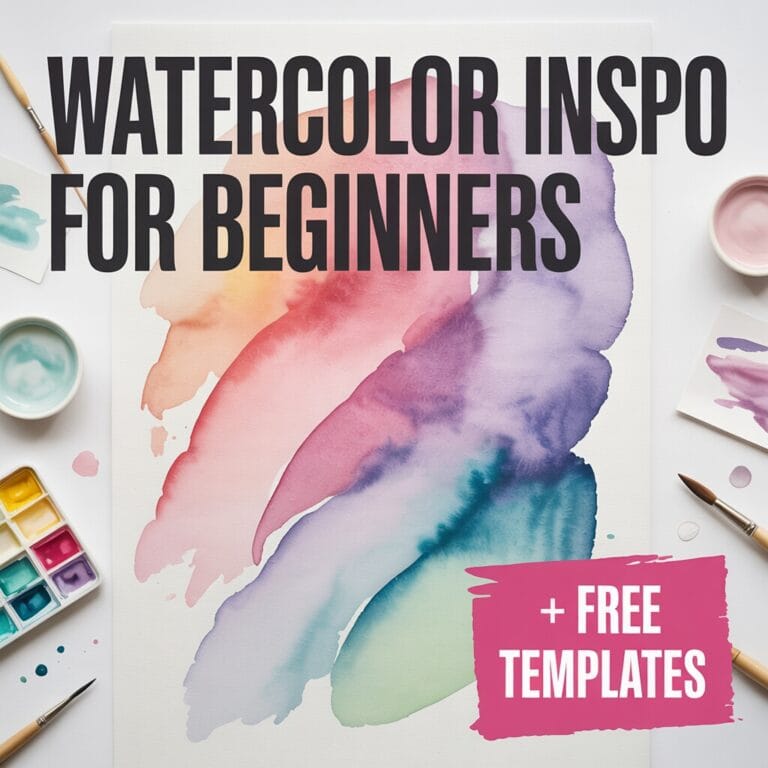Last Updated on May 31, 2025 by Dee
Ready to dive into watercolors but not sure where to start? You’re in the right place. Watercolor painting might seem intimidating at first—all those gorgeous, flowing paintings you see on Instagram can make you wonder if you’ll ever create something that beautiful. But here’s the thing: everyone starts somewhere, and watercolors are actually one of the most forgiving mediums once you get the hang of them.
The best part about watercolor? Happy accidents often turn into your favorite parts of a painting. That unexpected color blend or the way the paint bloomed on wet paper might just become the magic you never knew you needed.
Whether you’ve got a fancy watercolor set or just picked up a basic palette from the craft store, these ideas will get your creative juices flowing. No pressure, no perfection required—just pure, colorful fun.
Download the free watercolor templates at the end of this blog post!
Table of Contents
1. Simple Flower Silhouettes
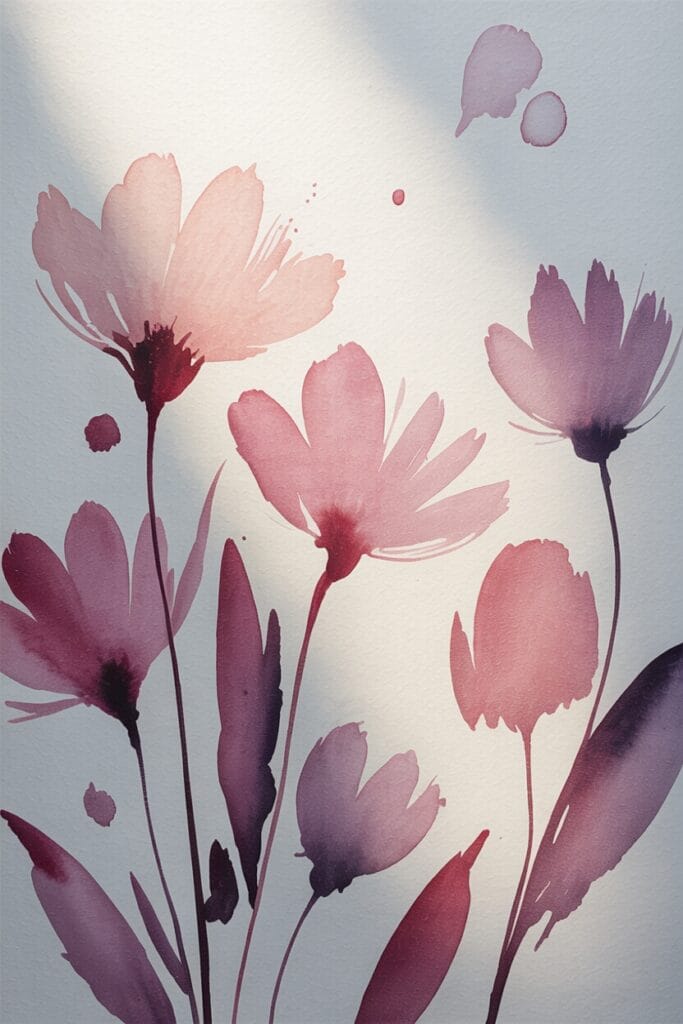
Start with basic flower shapes—think daisies, tulips, or abstract blooms. You don’t need to paint every petal perfectly. Just focus on the overall shape and let the watercolors do their thing.
Wet your brush, pick up some color, and paint loose, flowing shapes. The beauty is in the imperfection. Try layering different shades of the same color family for depth, or go wild with contrasting colors for a bold look.
Pro tip: Let each layer dry completely before adding the next, or embrace the wet-on-wet technique for dreamy, blended effects.
2. Gradient Skies

Nothing beats a good sky for practicing color blending. Start with a light wash of water across your paper, then drop in colors while it’s still damp. Watch how they naturally flow and blend together.
Try sunset colors—oranges, pinks, and purples—or go for a stormy look with grays and blues. The key is working while the paper is still wet enough for the colors to move freely.
Pro tip: Tilt your paper slightly to encourage the colors to flow in the direction you want.
3. Abstract Color Washes

Sometimes the most relaxing watercolor session is the one without a plan. Wet your paper and just play with color. Let different hues meet and mingle on the page.
This is perfect for testing new color combinations or just unwinding after a long day. You might discover color combos you never thought would work together.
Pro tip: Keep a spray bottle handy to re-wet areas if they start drying too quickly.
4. Minimalist Landscapes
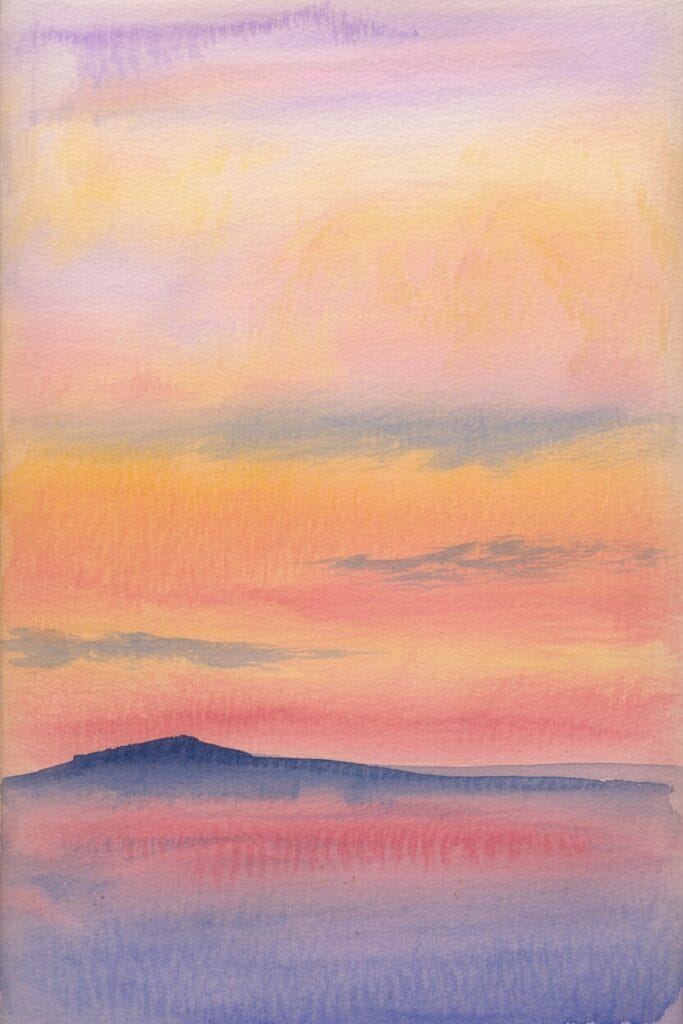
Think simple hills, basic trees, or a calm lake. You don’t need to paint every blade of grass—just capture the essence of the scene.
Start with the background elements first (like the sky), then work your way forward. Use lighter washes for distant elements and darker, more saturated colors for things in the foreground.
Pro tip: Less is more. A few well-placed strokes can suggest a entire forest.
5. Watercolor Lettering

Combine your love of beautiful words with watercolor magic. Start with simple letters or short phrases, then fill them in with gorgeous color gradients.
You can either paint the letters directly with watercolor or use masking fluid to preserve white space, then paint around it. Both techniques create stunning results.
Pro tip: Practice your lettering with pencil first, then go over it with watercolor once you’re happy with the layout.
6. Botanical Studies
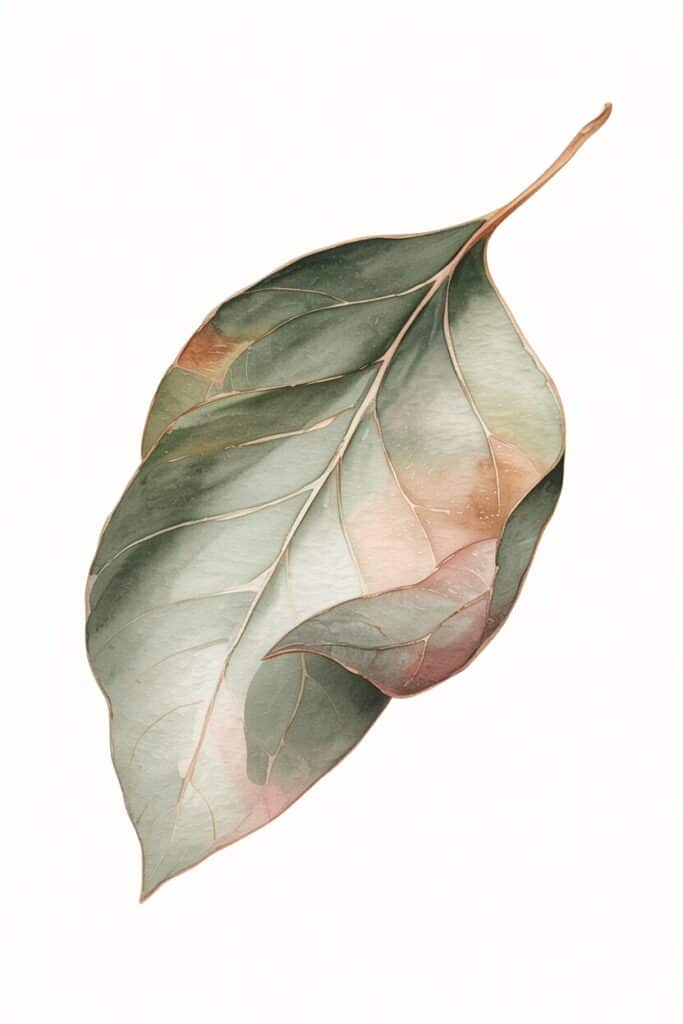
Pick a leaf, flower, or branch from your garden (or even a houseplant) and paint what you see. Don’t worry about botanical accuracy—focus on capturing the colors and basic shapes.
This is great practice for observation skills and color mixing. Plus, you’ll start noticing all the subtle color variations in nature that you might have missed before.
Pro tip: Start with lighter colors and gradually build up to darker tones. It’s easier to darken a color than to lighten it.
7. Geometric Patterns
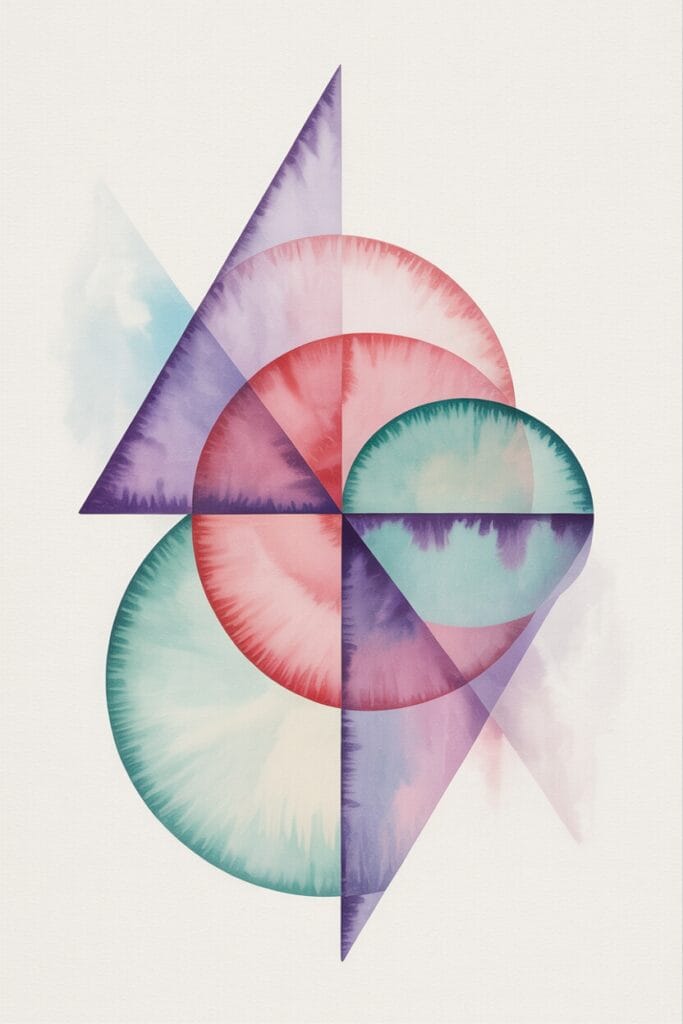
Who says watercolors are just for organic shapes? Try painting triangles, circles, or hexagons in different color combinations. The contrast between precise shapes and the fluid nature of watercolor creates really interesting effects.
You can mask off areas with tape for crisp edges, or paint freehand for a more relaxed look. Both approaches have their charm.
Pro tip: Let each section dry completely before painting adjacent areas to avoid unwanted color bleeding.
8. Color Study Swatches
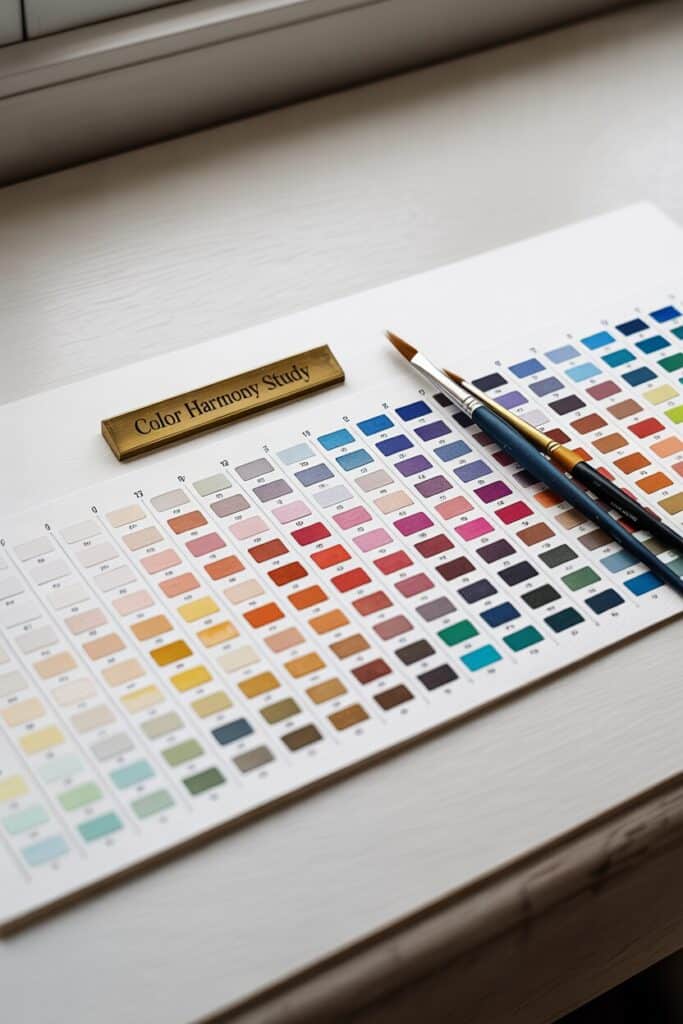
This might sound boring, but creating color swatches is actually super satisfying and incredibly useful. Mix different combinations of your colors and paint little squares or circles to see how they look.
You’ll learn so much about your paints and discover new favorite color combinations. Plus, you’ll have a handy reference for future paintings.
Pro tip: Label your swatches with the colors you used so you can recreate them later.
9. Simple Animal Silhouettes
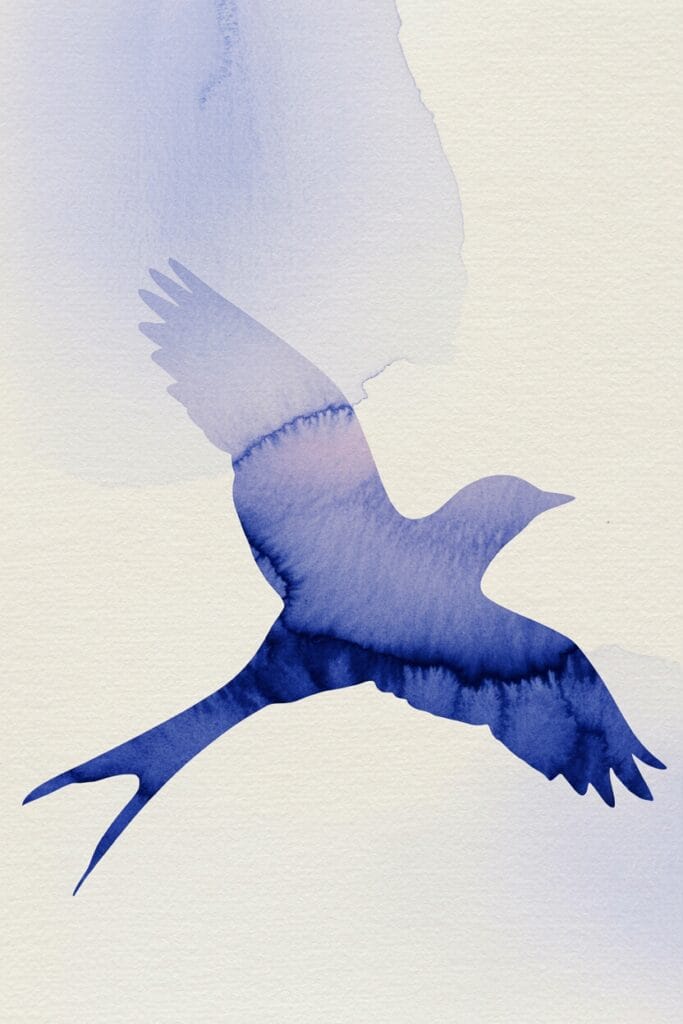
Start with easy shapes like birds, cats, or butterflies. Focus on the overall form rather than details. A simple bird silhouette can be incredibly striking when painted in beautiful watercolor gradients.
Try painting the silhouette in one color, then adding a second color while the first is still wet for natural blending effects.
Pro tip: Keep your shapes simple at first. You can always add more complexity as you get more comfortable.
10. Texture Experiments
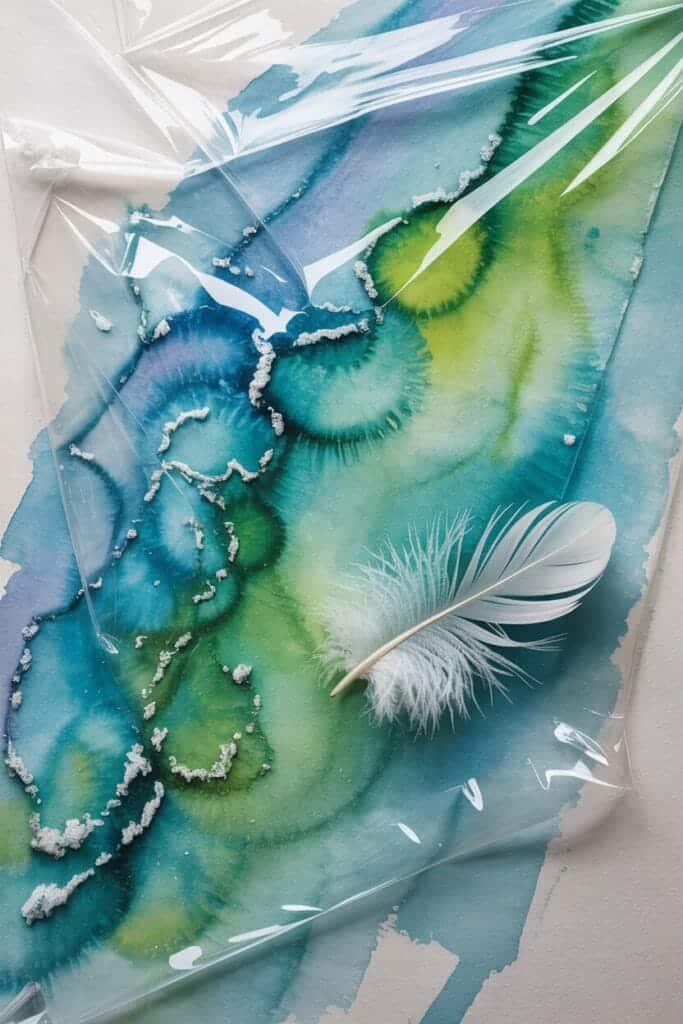
Watercolor isn’t just about smooth washes. Try sprinkling salt on wet paint for a crystalline effect, or use plastic wrap to create interesting textures. You can also try splattering or using a sponge for different effects.
These techniques might seem random, but they’re perfect for creating interesting backgrounds or adding texture to your paintings.
Pro tip: Experiment on scraps of watercolor paper first to see how different techniques work with your specific paints and paper.
11. Mood Color Studies
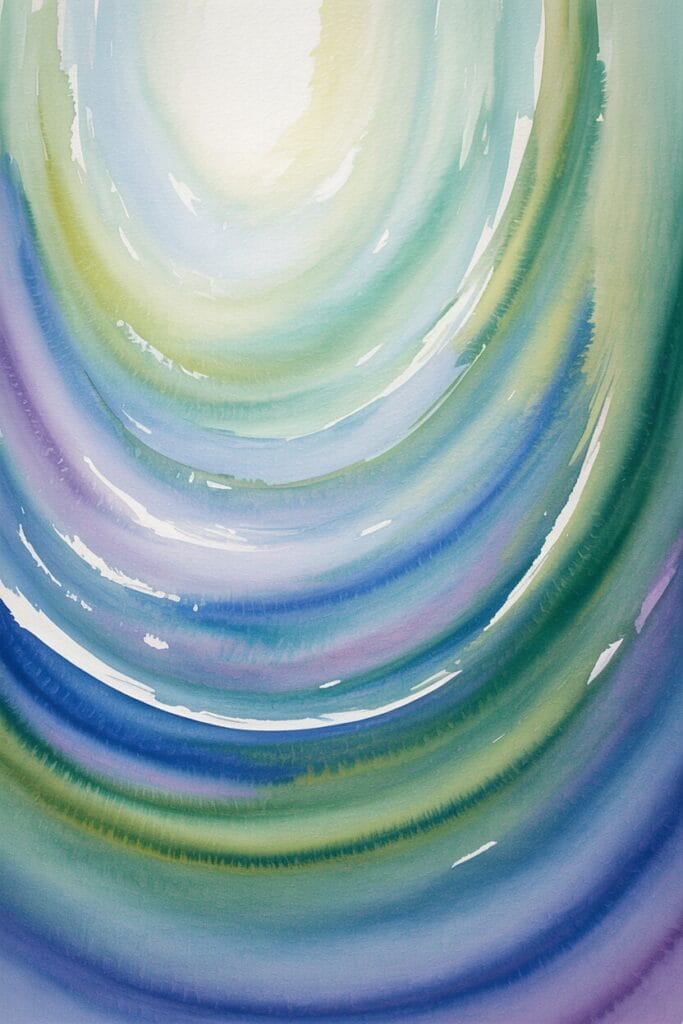
Pick an emotion or mood and paint it. What does “calm” look like in watercolor? How about “energetic” or “cozy”? This is more about color relationships and feeling than creating recognizable objects.
This exercise helps you understand how colors can convey emotions and will make your future paintings more intentionally expressive.
Pro tip: Don’t overthink it. Trust your instincts about which colors feel right for each mood.
Ready to Start Painting?
The best watercolor inspo comes from just starting. Grab your paints, pick one of these ideas, and see where it takes you. Remember, every professional artist started exactly where you are now—with curiosity, some paint, and a willingness to experiment.
Your first paintings might not look like museum pieces, and that’s perfectly fine. The joy is in the process, the learning, and those magical moments when the paint does something unexpected that’s even better than what you planned.
Pin this for later!

Watercolor Painting Supplies To Get Started!
This is my go-to list of recommended watercolor painting supplies that we use for all our watercolor art, junk journaling, and art journaling!
**This page may contain affiliate links to products I have used or recommend. If you purchase something from this page, I may receive a small percentage of the sale at no extra cost to you.**
- Watercolors: Windsor & Newton is a reputable brand that offers high-quality watercolor paints. You can choose from their range of professional-grade watercolor tubes or pans, depending on your preference.
- Watercolor Paper: Look for cold-pressed, 140lb (300gsm) watercolor paper for the best results. This type of paper is durable and has a nice texture that’s ideal for watercolor painting.
- Brushes: A selection of round and flat brushes in various sizes will give you the versatility you need for different strokes and details. Sable or synthetic brushes designed for watercolor will give you the best performance.
- Palette: A mixing palette with wells for both mixing and holding your paints is essential. It can be a simple plastic one or a porcelain palette for a more luxurious feel.
- Water Container: Any clean jar or container will do, but having two for clean and dirty water can help keep your colors pure.
- Masking Fluid: This is used to cover areas of your painting that you want to keep white. Make sure to apply it with an old brush or a dedicated masking fluid brush, as it can ruin fine bristles.
- Pencils: A soft pencil, like a 2B, is great for sketching your design before painting.
- Eraser: A kneaded eraser is gentle on watercolor paper and can lift pencil lines without damaging the surface.
- Paper Towels or a Rag: These are useful for blotting your brush to control the amount of water and paint.
- Board: If you’re using watercolor paper from a pad or sheets, you might want to tape your paper down to a board to prevent warping.
This post contains affiliate links, which means I may earn a small commission if you make a purchase through these links at no extra cost to you. I only recommend products I genuinely use and love in my own art practice. Your support helps me keep creating free content and tutorials for the art community. Thank you!
Free Printable Watercolor Templates HERE (below)!
To access the free in-post printables for this post, you’ll just need to create a free account or log in with the Grow.me tool. Then, confirm by email and refresh the page, and ALL my free printables will automatically unlock in every post!
For more printable holiday fun, check out our Free Christmas Junk Journal Printables.
Love These Watercolor Templates? Get Even More Exclusive Creative Goodies on My Patreon! 🎨
If you’re enjoying these free printables, why not join my Artsydee Patreon community? As a member, you’ll gain access to exclusive Procreate tutorials, watercolor lessons, and tons of printables like this one, which are delivered to you monthly (and sometimes even twice a month!). Plus, you’ll get sneak peeks at upcoming projects and have a say in what content I create next. ✨
Join today and unlock premium resources to take your creativity to the next level!
More resources you may enjoy…
The 11 Best Watercolor Pencils + 7 Easy Techniques To Use Them!
Watercolor Sunset Wonders: 30 Inspirations to Paint the Sky
45+ Watercolor Painting Ideas for Beginners: Fun and Easy Techniques to Get Started
Watercolor Markers: A Beginner’s Guide to Choosing and Using Them
